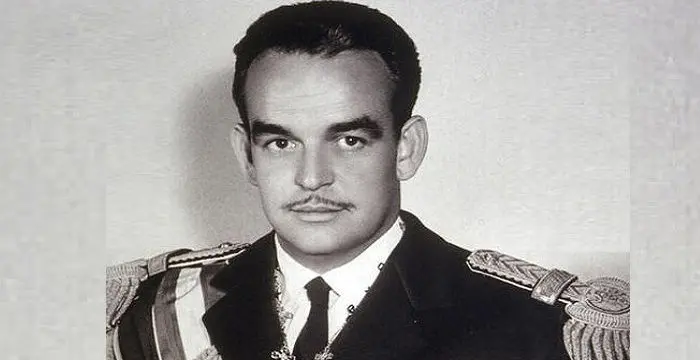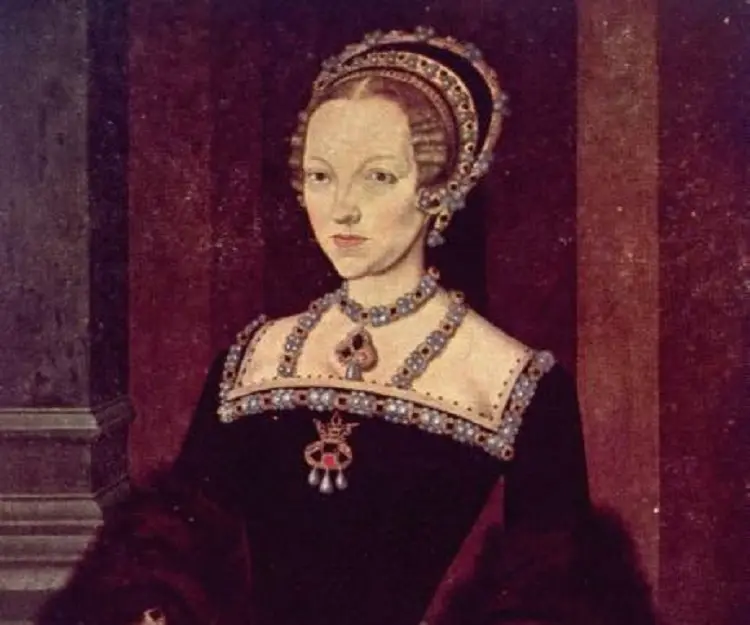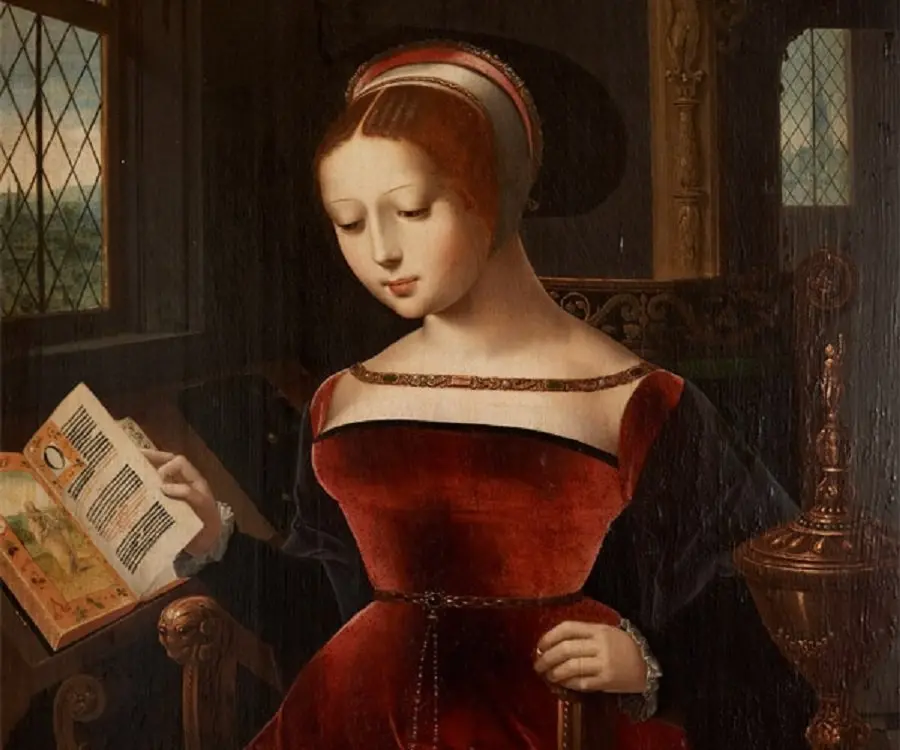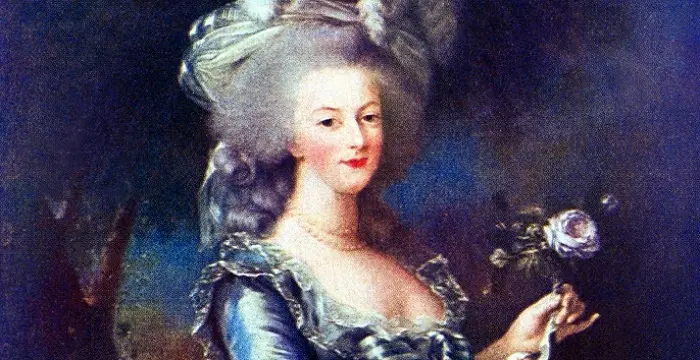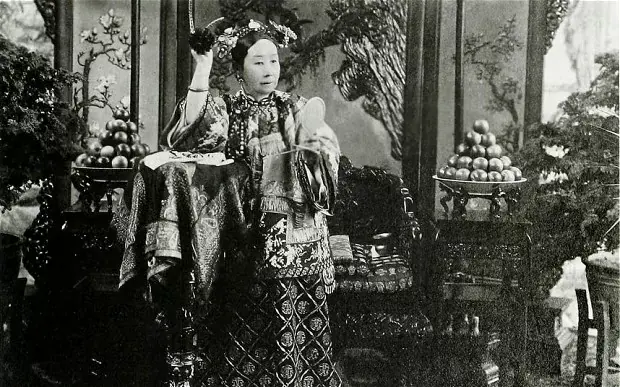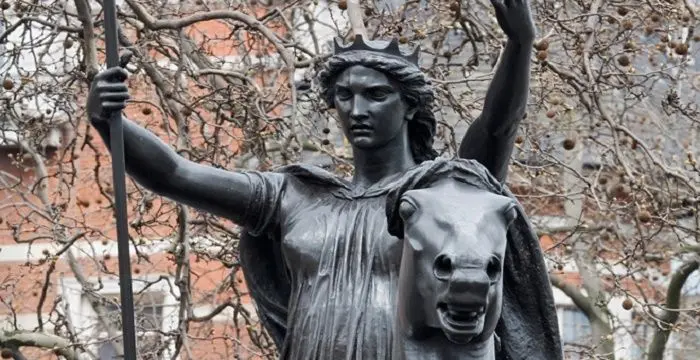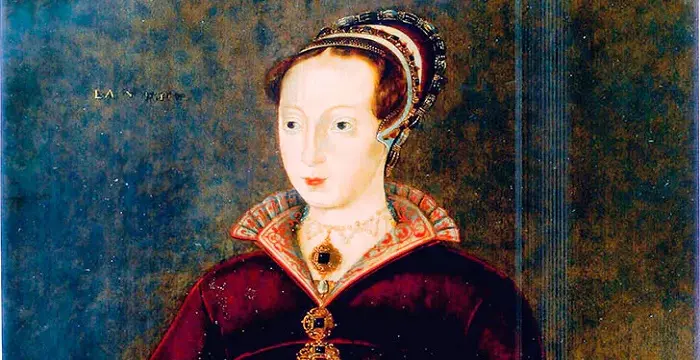
Lady Jane Grey - Queens, Family and Childhood
Lady Jane Grey's Personal Details
Lady Jane Grey was the de facto monarch of England for a very short period from 10 July until 19 July 1553
| Information | Detail |
|---|---|
| Birthday | 1537 |
| Died on | February 12, 1554 |
| Nationality | British |
| Famous | Historical Personalities, Empresses & Queens, Empresses, Monarch, Queens |
| Hobbies | Music |
| Spouses | Lord Guildford Dudley |
| Siblings | Lady Catherine Grey, Lady Mary Grey |
| Known as | The Nine Days' Queen, Lady Jane Dudley |
| Cause of death |
|
| Birth Place | Leicestershire |
| Religion | Protestantism |
| Gender | Female |
| Father | Henry Grey, 1st Duke of Suffolk |
| Mother | Frances Grey, Duchess of Suffolk |
| Born in | Leicestershire |
| Famous as | Monarch |
| Died at Age | 17 |
// Famous Monarch
Ibn Saud
King Abdulaziz al-Saud was the first monarch of Saudi Arabia. This biography of King Abdulaziz al-Saud provides detailed information about his childhood, life, achievements, works & timeline
Rainier III, Prince of Monaco
Rainier III, Prince of Monaco was one of the longest reigning monarchs in European history. This biography of Prince Rainier III provides detailed information about his childhood, life, achievements, works & timeline.
Lady Jane Grey's photo
Who is Lady Jane Grey?
Lady Jane Grey was the nominal queen of England who ruled for only nine days in 1553. Her accession was part of her father-in-law, John Dudley’s unsuccessful plan to enthrone his own son, Lord Guildford Dudley. She became an iconic figure after her execution at the hands of Mary Tudor, largely due to the machinations of her wicked mother and deceitful political games. Despite her reluctance to take over the kingdom considering herself incompetent and undeserving, she was forcefully nominated as the heiress by Edward VI, upon being influenced and manipulated by Dudley. However, her succession lasted for just nine days, as she was arrested and charged for high treason by Mary, who proclaimed herself as the queen, supported by the populace and Privy Council. Hence, she was also known as the ‘Nine Day Queen’. Her death sentence, which was suspended initially, was revoked after Sir Thomas Wyatt’s Protestant rebellion, leading to her execution along with her husband. Despite her short journey of nine days as the queen, she is still considered one of the most prominent empresses England had. She was later remembered as a martyr during the reign of her Protestant cousin, Queen Elizabeth I. Even though she died young, she had a fetish for learning and became proficient in various languages under her tutors.
// Famous Empresses
Jetsun Pema
Jetsun Pema is the Queen consort of Bhutan. Check out this biography to know about her childhood, family life, achievements and fun facts about her life.
Princess Alice of Battenberg
Princess Andrew of Greece and Denmark, also known as Princess Victoria Alice Elizabeth Julia Marie of Battenberg, was the mother of Prince Philip, Duke of Edinburgh and mother-in-law of Queen Elizabeth II. This biography profiles her childhood, famil
Marie Antoinette
Marie Antoinette was the Queen of France and Navarre from 1774 to 1792. who played a major role in provoking the French Revolution. This biography of Marie Antoinette provides detailed information about her childhood and life
Childhood & Early Life
Lady Jane Grey was born in October 1537 at Bradgate Park, Leicestershire, as the eldest daughter of Marquees of Dorset, Henry Grey, and Lady Frances Brandon, daughter of Henry VIII’s sister, Mary Tudor.
She, along with her two younger sisters – Lady Catherine Grey (1940) and Lady Mary Grey (1945), was related to Henry VII as his great-granddaughters.
Due to her strict upbringing and abusive behavior of her mother, she never developed a close relationship with her parents. She learned Greek, Italian, Latin, French, Hebrew and English from her tutors at an early age.
In 1547 at the age of nine, she went to stay in the household of Queen Katherine Parr, the sixth and last queen of Henry VIII, who after the death of the latter married her love, Thomas Seymour, the Lord Admiral.
She became the chief mourner at Parr’s funeral who died in childbirth in 1548, after which she was made a ward of Seymour who proposed her marriage with his nephew, King Edward VI.
Following Seymour’s execution on charges of treason in 1549, she returned to Bradgate to resume her studies and started making appearances at the royal court following her father’s accession as the Duke of Suffolk in 1551.
Influenced by the environment at Parr’s home, she grew up to become a pious and devout Protestant.
Accession & Reign
In 1551, John Dudley became the Duke of Northumberland and the chief advisor to King Edward VI, thereby becoming the most powerful man in England behind the King.
Dudley was successful in convincing Edward in altering the line of succession in favor of the male heir born to Jane’s mother, or Jane and her male heirs, to crown his son as the king ultimately.
In June 1553, the ailing Edward, suffering from measles and tuberculosis, named Jane as his successor, sidelining his half-sisters, Mary and Elizabeth, as illegitimate under influence from Dudley.
She was informed of Edward’s death two days later on July 9, 1553, upon her succession to the throne, despite being reluctant and claiming Mary to be the rightful heir and herself incapable of taking charge.
She was officially crowned as the Queen of England on July 10, 1553 at the Tower of London, but she refused to accept her husband as king and declared him as the Duke of Clarence, instead.
As the news of Edward’s death spread, Mary, a devoted Roman Catholic, set out for East Anglia and began rallying with supporters, while Dudley led his troops from London to stop her on July 14, 1553.
The populace started revolting against Jane and demanding Mary’s coronation. Eventually, the entire Privy Council, except her father and Cranmer, left to support Mary and proclaimed her Queen publicly on July 19, 1553.
Jane and her husband were arrested and imprisoned at the deputy lieutenant’s house, where all her belongings and money were confiscated and was even accused of robbing precious items from the royal residence.
The entire Dudley family was arrested and arched through the streets, where they were pelted with insults and filth by the public ahead of Mary’s triumphant march to London in early August 1553.
Her father was arrested for high treason and confined to the Tower, but was released within days upon her mother’s direct appeal to Mary. Interestingly, no such attempt was made for Jane’s liberation.
Following Dudley’s execution on August 22, 1553, Jane, along with her husband, two brother-in-laws and Cranmer, were put on trial and found guilty, and received death sentence in November 1553.
While the sentence was suspended, her father’s support in the Protestant rebellion of Sir Thomas Wyatt in January 1553 invalidated the decision and sealed her fate, even though she was innocent.
Her execution was scheduled for February 9, 1554 but was postponed by three days with Mary hoping to convert her to Catholicism and pardoning her, which she refused.
Personal Life & Legacy
Despite her protests and refusal, she was physically abused and forcefully married to John Dudley’s youngest son, Lord Guildford Dudley, in May 1553 at Dudley’s London residence, Durham House.
As part of a triple wedding, her sister Catherine was also married to Lord Herbert, Earl of Pembroke’s heir, while Lord Guildford’s sister, Katherine was paired with Earl of Huntingdon’s heir, Henry Hastings.
On February 12, 1554, her husband was publicly beheaded at Tower Hill, after which she was beheaded privately in a room at Tower Green, inside the Tower, due to her royal lineage.
She and Guildford were laid to rest at St. Peter ad Vincula Chapel, on the north side of Tower Green.
While her father was executed 11 days later, her mother remarried Adrian Stokes, a 21-year old chamberlain, probably within a month of the execution of her daughter and husband.
// Famous Queens
Jetsun Pema
Jetsun Pema is the Queen consort of Bhutan. Check out this biography to know about her childhood, family life, achievements and fun facts about her life.
Princess Alice of Battenberg
Princess Andrew of Greece and Denmark, also known as Princess Victoria Alice Elizabeth Julia Marie of Battenberg, was the mother of Prince Philip, Duke of Edinburgh and mother-in-law of Queen Elizabeth II. This biography profiles her childhood, famil
Marie Antoinette
Marie Antoinette was the Queen of France and Navarre from 1774 to 1792. who played a major role in provoking the French Revolution. This biography of Marie Antoinette provides detailed information about her childhood and life
Lady Jane Grey biography timelines
- // Oct 1537Lady Jane Grey was born in October 1537 at Bradgate Park, Leicestershire, as the eldest daughter of Marquees of Dorset, Henry Grey, and Lady Frances Brandon, daughter of Henry VIII’s sister, Mary Tudor.
- // 1547In 1547 at the age of nine, she went to stay in the household of Queen Katherine Parr, the sixth and last queen of Henry VIII, who after the death of the latter married her love, Thomas Seymour, the Lord Admiral.
- // 1548She became the chief mourner at Parr’s funeral who died in childbirth in 1548, after which she was made a ward of Seymour who proposed her marriage with his nephew, King Edward VI.
- // 1549 To 1551Following Seymour’s execution on charges of treason in 1549, she returned to Bradgate to resume her studies and started making appearances at the royal court following her father’s accession as the Duke of Suffolk in 1551.
- // 1551In 1551, John Dudley became the Duke of Northumberland and the chief advisor to King Edward VI, thereby becoming the most powerful man in England behind the King.
- // Jan 1553While the sentence was suspended, her father’s support in the Protestant rebellion of Sir Thomas Wyatt in January 1553 invalidated the decision and sealed her fate, even though she was innocent.
- // May 1553Despite her protests and refusal, she was physically abused and forcefully married to John Dudley’s youngest son, Lord Guildford Dudley, in May 1553 at Dudley’s London residence, Durham House.
- // Jun 1553In June 1553, the ailing Edward, suffering from measles and tuberculosis, named Jane as his successor, sidelining his half-sisters, Mary and Elizabeth, as illegitimate under influence from Dudley.
- // 9th Jul 1553She was informed of Edward’s death two days later on July 9, 1553, upon her succession to the throne, despite being reluctant and claiming Mary to be the rightful heir and herself incapable of taking charge.
- // 10th Jul 1553She was officially crowned as the Queen of England on July 10, 1553 at the Tower of London, but she refused to accept her husband as king and declared him as the Duke of Clarence, instead.
- // 14th Jul 1553As the news of Edward’s death spread, Mary, a devoted Roman Catholic, set out for East Anglia and began rallying with supporters, while Dudley led his troops from London to stop her on July 14, 1553.
- // 19th Jul 1553The populace started revolting against Jane and demanding Mary’s coronation. Eventually, the entire Privy Council, except her father and Cranmer, left to support Mary and proclaimed her Queen publicly on July 19, 1553.
- // Aug 1553The entire Dudley family was arrested and arched through the streets, where they were pelted with insults and filth by the public ahead of Mary’s triumphant march to London in early August 1553.
- // 22nd Nov 1553Following Dudley’s execution on August 22, 1553, Jane, along with her husband, two brother-in-laws and Cranmer, were put on trial and found guilty, and received death sentence in November 1553.
- // 9th Feb 1554Her execution was scheduled for February 9, 1554 but was postponed by three days with Mary hoping to convert her to Catholicism and pardoning her, which she refused.
- // 12th Feb 1554On February 12, 1554, her husband was publicly beheaded at Tower Hill, after which she was beheaded privately in a room at Tower Green, inside the Tower, due to her royal lineage.
- // 1940 To 1945She, along with her two younger sisters – Lady Catherine Grey (1940) and Lady Mary Grey (1945), was related to Henry VII as his great-granddaughters.
// Famous Empresses & Queens
Jetsun Pema
Jetsun Pema is the Queen consort of Bhutan. Check out this biography to know about her childhood, family life, achievements and fun facts about her life.
Princess Alice of Battenberg
Princess Andrew of Greece and Denmark, also known as Princess Victoria Alice Elizabeth Julia Marie of Battenberg, was the mother of Prince Philip, Duke of Edinburgh and mother-in-law of Queen Elizabeth II. This biography profiles her childhood, famil
Marie Antoinette
Marie Antoinette was the Queen of France and Navarre from 1774 to 1792. who played a major role in provoking the French Revolution. This biography of Marie Antoinette provides detailed information about her childhood and life
Nefertiti
Neferneferuaten Nefertiti was an Egyptian queen and chief consort of Akhenaten, an Egyptian Pharaoh. This biography profiles her childhood, family, life as queen, accomplishments, death, and other facts.
Empress Dowager Cixi
Empress Dowager Cixi was a Chinese empress dowager and regent of the Qing Dynasty. This biography profiles her childhood, rise to power, rule, administration and other interesting facts.
Boudica
Boudica was a queen of the Celtic Icenic tribe, who led an uprising against Roman invaders. Check out this biography to know about her childhood, family, achievements, etc.
Lady Jane Grey's FAQ
When was Lady Jane Grey died?
Lady Jane Grey was died at 1554-02-12
Where was Lady Jane Grey died?
Lady Jane Grey was died in Tower of London
Which age was Lady Jane Grey died?
Lady Jane Grey was died at age 17
Where is Lady Jane Grey's birth place?
Lady Jane Grey was born in Leicestershire
What is Lady Jane Grey nationalities?
Lady Jane Grey's nationalities is British
What is Lady Jane Grey hobbies?
Lady Jane Grey's hobbies is Music
Who is Lady Jane Grey spouses?
Lady Jane Grey's spouses is Lord Guildford Dudley
Who is Lady Jane Grey siblings?
Lady Jane Grey's siblings is Lady Catherine Grey, Lady Mary Grey
What is Lady Jane Grey's cause of dead?
Lady Jane Grey dead because of Execution
What is Lady Jane Grey's religion?
Lady Jane Grey's religion is Protestantism
Who is Lady Jane Grey's father?
Lady Jane Grey's father is Henry Grey, 1st Duke of Suffolk
Who is Lady Jane Grey's mother?
Lady Jane Grey's mother is Frances Grey, Duchess of Suffolk
How famous is Lady Jane Grey?
Lady Jane Grey is famouse as Monarch

